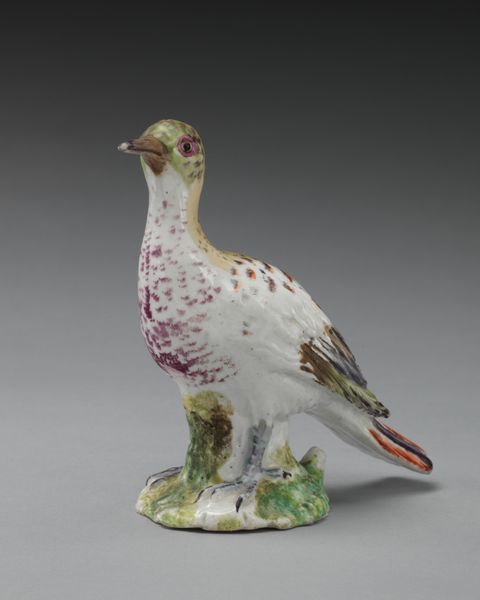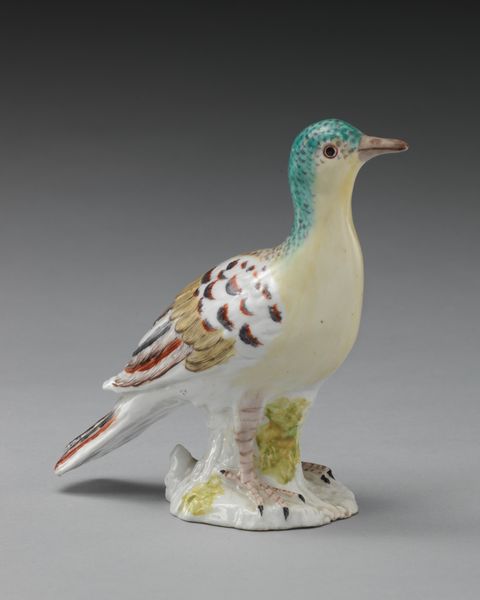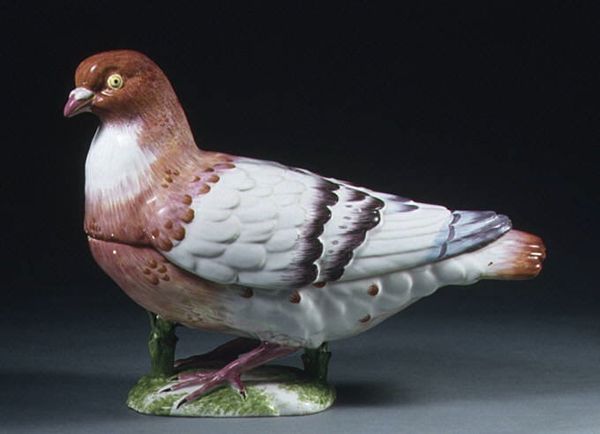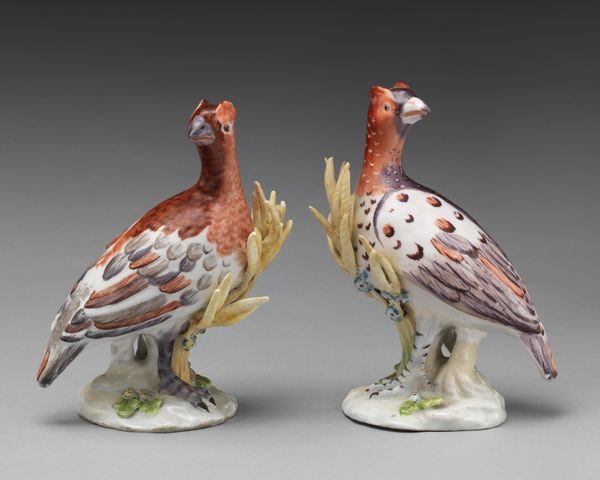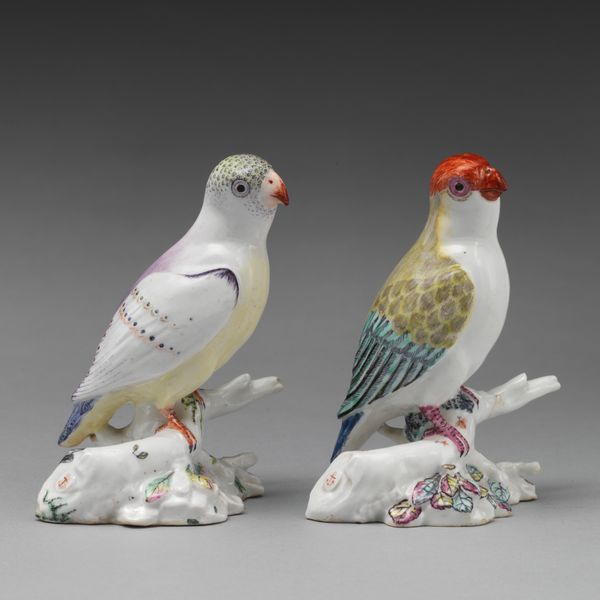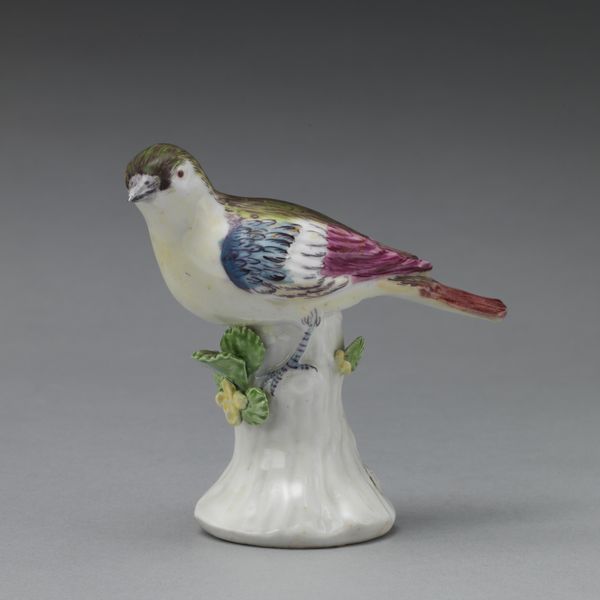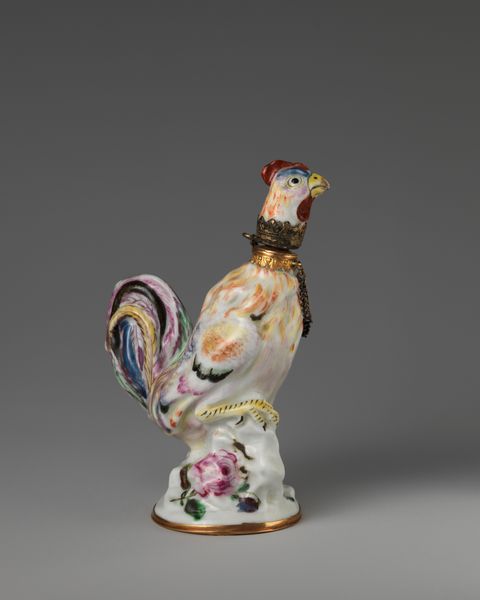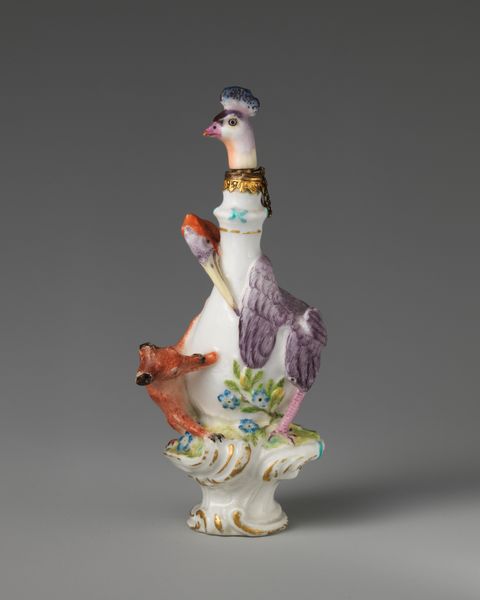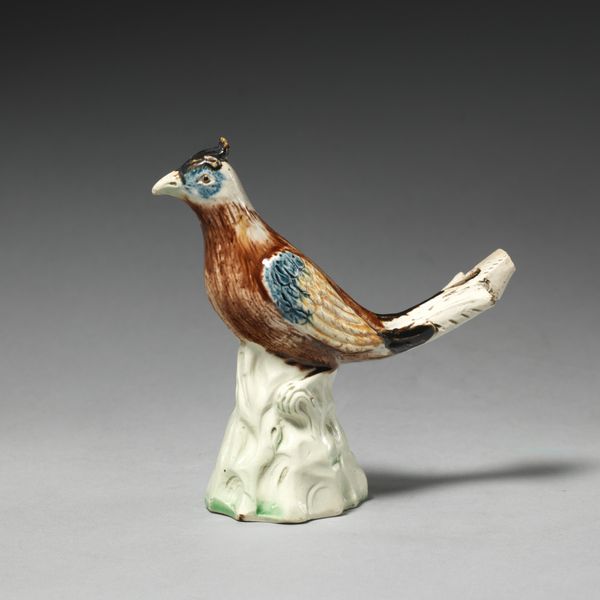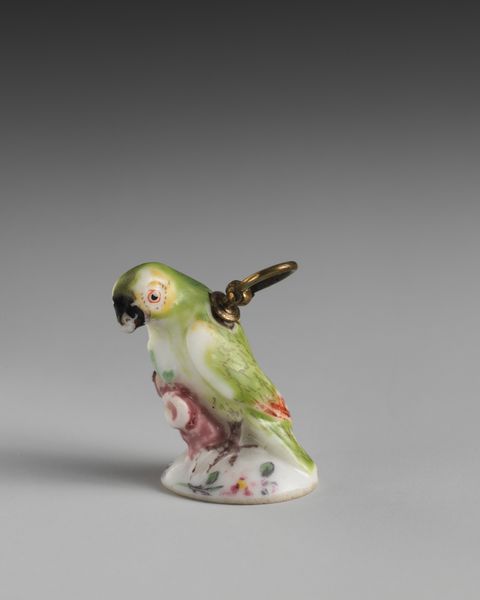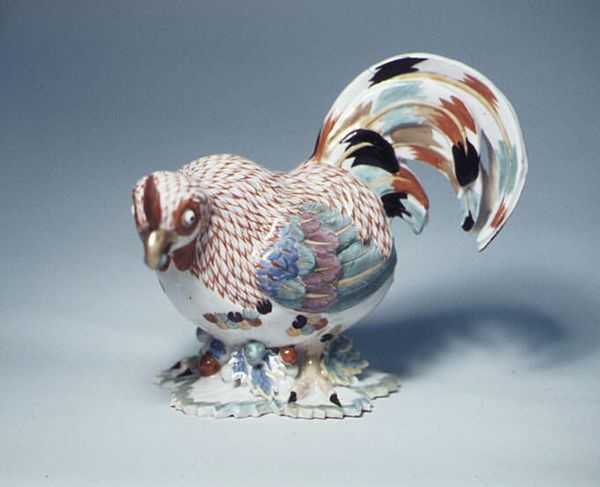
ceramic, sculpture
#
ceramic
#
sculpture
#
decorative-art
#
rococo
Dimensions: 24.8 × 14.6 × 32.4 cm (9 3/4 × 5 3/4 × 12 3/4 in.)
Copyright: Public Domain
Curator: What a peculiar, lovely thing! At first glance, I’m caught by this almost absurd elegance. It’s delicate but substantial, the sort of piece that simultaneously amuses and commands attention. It’s… a bird of some kind? Editor: Indeed. We're looking at a ceramic "Pigeon Tureen," created around 1755 by the Strasbourg Pottery and Porcelain Factory. It resides here at the Art Institute of Chicago as a beautiful example of rococo decorative art. I can definitely see what you mean by absurd elegance! Curator: Rococo is spot-on! This pigeon is practically preening with its pastel plumage and slightly vacant expression. You know, I'd almost expect it to offer me a bonbon. The scale is unexpected. I was not ready to eat soup from that. What a flex of wealth! Editor: It's absolutely a statement. And it’s precisely this overt display that reveals some interesting aspects about class and privilege in 18th-century Europe. Tureens, like this pigeon, were luxury items, accessible only to the very wealthy. Owning such a piece communicated status. Think about the symbolism too. Birds often represented freedom and abundance. Curator: Mmm, freedom and abundance... served in a savory broth, no doubt. But truly, isn't there something almost subversive about turning a symbol of freedom into a vessel, a container? As though nature, like the lower classes, could be made to serve the whims of the aristocracy. Editor: Exactly. It begs the question, Whose freedom are we talking about here? This is also linked to the period’s obsession with exoticism and the control over the natural world. Curator: Though, on the other hand, it's such an exquisitely crafted piece. The modeling of the feathers, the delicate coloring. It's not mere ostentation; there’s a palpable joy in its making. There’s something delightfully whimsical about using ceramics to mimic an animal. And to imagine an entire elaborate tablescape around that pigeon is hilarious. It makes me wonder what would it feel like serving out of that pigeon. Editor: True. There's a tension, isn't there, between its artistic merit and its problematic connotations? But engaging with these complexities, teasing out these contradictions, that’s where the real richness lies, in confronting our shared history, uncomfortable as it can be. Curator: Yes. So, next time I encounter a pigeon, whether on a park bench or rendered in porcelain, I'll remember this extravagant tureen and consider what messages this creature is carrying and the privilege with which it comes. Editor: Indeed, it transforms a simple decorative piece into a poignant reminder of power, class, and the stories objects silently tell.
Comments
No comments
Be the first to comment and join the conversation on the ultimate creative platform.
